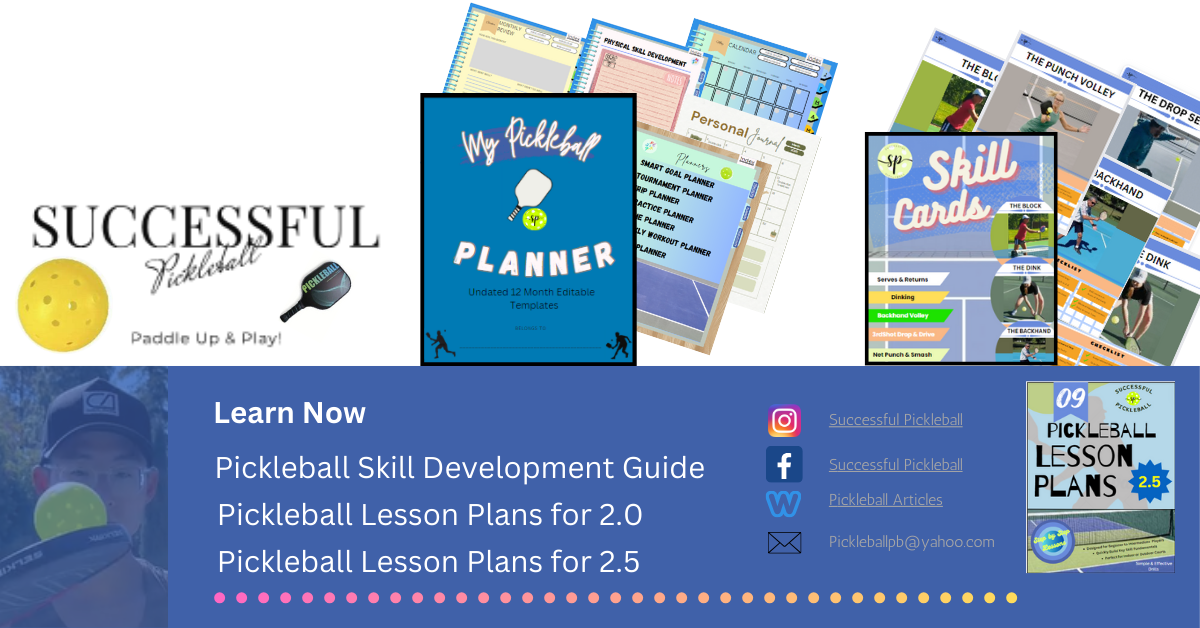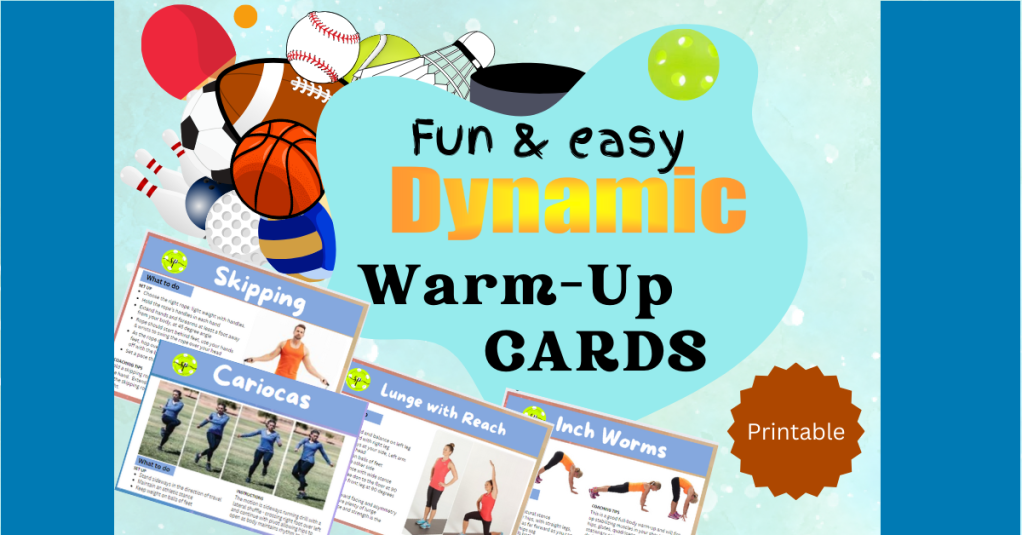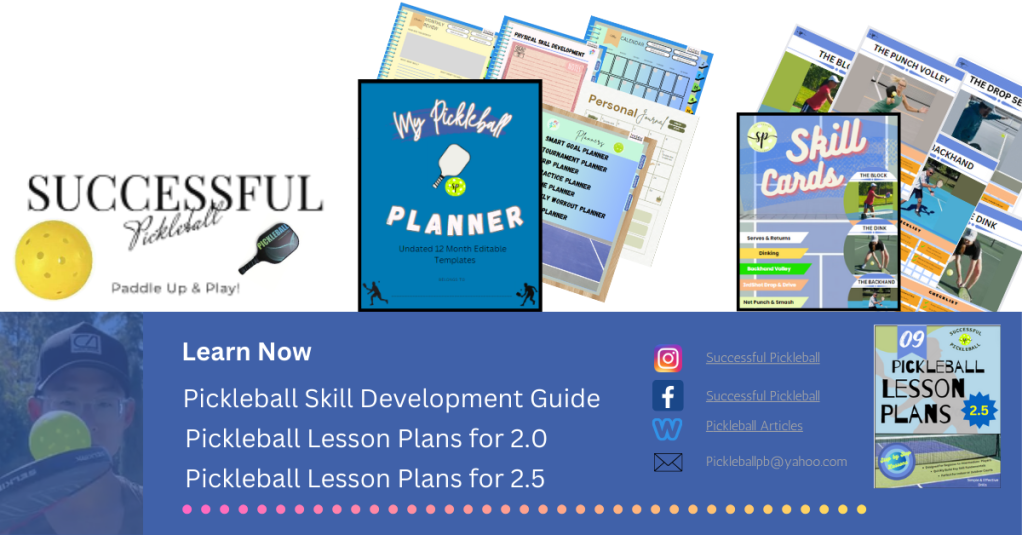
Warm-up
Take 5 – minutes to warm up adequately before conducting any drills.
Warming up the body is important for the following reasons:
- Prime your body for movement
- Lower risk of injury
- Increase body & muscle temperature
- Mentally prepare for workout or sport demands
- Increase flexibility & lubricates and increases elasticity of joints
- Rev up the cardiovascular system
- Loosen areas that are especially tight & tune in with preexisting aches & pains
- Fire up the core to support the demands of weight bearing muscles.
Warm-ups should be easy and specific to the main movements required for the workout or sport and dialed in to what your body needs to achieve that movement.
Drill # 1 – Potato Races

Sometimes potatoes work (they don’t roll away) Place 4 balls on the baseline. Get into a ready position at the NVZ and right sideline facing the net. Pivot right, and run to the baseline to collect a ball to place it on the NVZ line. Assume a ready position at the service T line, then pivot left to run and collect the next ball. Place it on the NVZ line. Continue the sequence across the NVZ with the remaining two balls. Repeat the drill but now start at the baseline and move forward to collect the balls, pivoting at the NVZ back to the baseline to place the ball on the line. Add your partner and see who can complete the cycle fastest.
Drill #2 – Skipping Rope

Great for a warmup as well. Use a variety of skipping styles to get your feet moving. Try it with high knee height, or double rotation for every jump, swing the rope sideways between jumps, or backward skipping.
Did you know there are many unique benefits of jumping rope? Few training tools require both physical and mental presence like the jumping rope. Plus jumping rope helps develop the left and right hemispheres of your brain as well as raising spatial awareness. In fact, studies show jumping rope improves your memory, making you more mentally alert and most athletes can gain fitness results in shorter periods of time than those who do not jump rope.
Drill #3 – Slalom Races for Coordination

This is great for practicing side steps. Place a few small orange cones or another obstacle a few feet away from one another. Weave in and out while timing yourself or racing against your partner. Ideally, you want to improve your timing, so record results in a personal training notebook.
Quick response in pickleball is a game-changer for the serious athlete. Good coordination means you can change direction quickly and are ready to move to the best position possible to execute the next action. Coordination improves your balance, agility, speed, and responsiveness which means you will be less likely to injure yourself when the competition heats up in a close game. Correct form is best performed during a slalom course. The idea is to perform quality movements and build your focus to cultivate discipline when maneuvering around obstacles. The course can be straight-forward or be cultivated to utilize memorization. Remember that building in a sense of control during practice is a great way to increase focus when things are not completely under your control in a game.
Drill #4 Step Training

Simply use any staircase. At home, in a gym, at a local hockey rink, wherever. Go up one step at a time, then try two steps at a time. Race against the clock to improve timing. Never run downstairs, walk and then try it in succession to improve conditioning. Don’t forget to record your outcome.
Step training is perfect for developing single leg strength and isolating particular muscle groups like the gastrocnemius. Some of the benefits of step training include muscularly balanced strength, endurance, coordination, cognitive function, and weight loss. Most step workouts can give you 8,000+ steps for the day, boost mood, and create focus in the present moment. If you incorporate a step aerobic class, you may want to consider using other equipment such as balls, kettlebells, hand weights to challenge yourself.
Drill #5 AGILITY TRAINING
Mini-Hurdles. Set up a series of paddles or pylons, or hoops, and time yourself as you jump over them. You can run over them or set it up that you jump with both feet up and over, leaving little room for steps between. Remember to keep your knees high.
Purchase an agility ladder – Video Link: Ladder Training


My favorite agility ladder drills are linear speed drills – where you run down the centre of the ladder with each foot coming in contact with the boxes, lateral agility quick steps – where sprinting laterally through the ladder by lifting your feet high into the boxes as quickly as you can while moving diagonally forward one box at a time until you reach the end of the ladder, and the in & out ladder drill – both feet are in the first box, then hop forward to the second box while spreading feet and landing outside the box then jump to the third box bringing both feet back into the centre of the box. Continue the entire length of the ladder.
Drill #6 –CHASSE STEP
You can move further and faster using this step. Badminton players use it to generate speed and power. If your games take you off the NVZ line and have to defend within the court, you may want to consider also cross-step from corner to corner. The first step is from the non-dominant leg to go back and push off much like in a sprint start. The next stage is for the dominant leg to move forwards. The next phase will have you moving the non-dominant foot up behind and slightly closer, so the back leg is slightly crossed behind the front leg. Then move the dominant leg forward in the direction of the ball – extend the paddle arm out in front of the body.
Achieve it
Find a workout that you enjoy. Challenge yourself with some new and different routines. Try different things for a few weeks or a month before giving up on a type of exercise like slalom races or step training. Start off with small goals and be realistic about how often you can exercise. After a few weeks of consistency, add new exercises to your routine. Set a performance goal then measure your progress to both see how you are feeling and and accomplishing. The 6-week training plan is designed to assist with goals, why not give it a try?
6 Footwork Drills

Please consider subscribing to our blog for more great pickleball content and make sure to follow me on Facebook and read our latest newsletter for some exciting news for the Spring 2023. Grab your dynamic warm-up exercise eBook as well, happy training!
Please Share
If you enjoy our game tips for pickleball players & coaches, please forward to fellow athletes, club members or coaches who you think would appreciate it. Download a free report.

Remember to be patient with yourself and see you on the courts!

Pre-Game Report
- Discover if your pregame jitters are positive or negative
- Identify mistakes in your pre-competition mental preparation
- Learn the important pre-game mental skill to perform your best!











































2 responses to “6 Footwork Drills”
[…] https://successfulpickleball.wordpress.com/2019/02/23/6-footwork-drills […]
LikeLiked by 1 person
[…] Essential Footwork Drills for All Levels 6 Footwork Drills […]
LikeLike